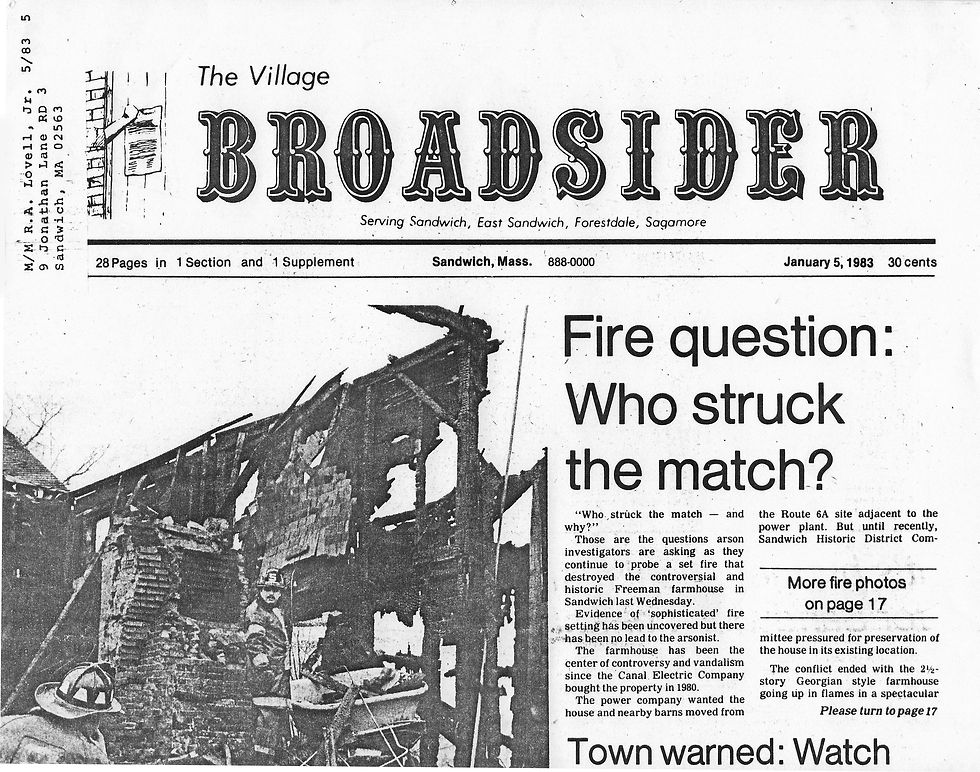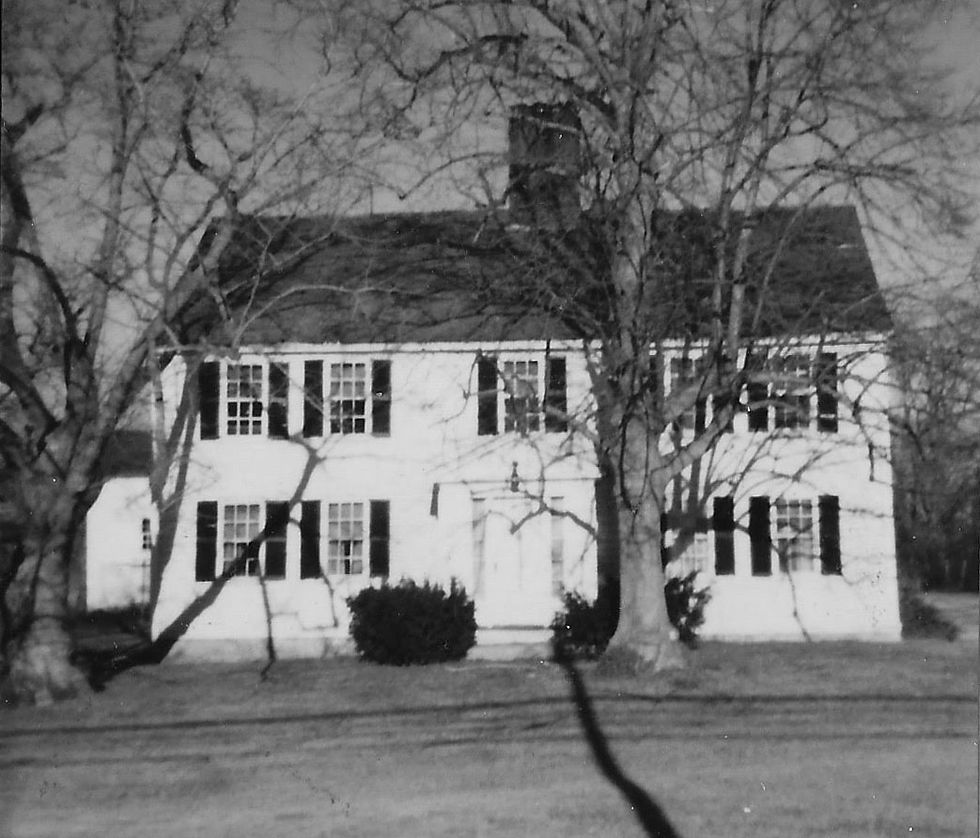Who Burned Down the Freeman Farm? (Part 1)
- Kaethe Maguire
- Jun 11, 2021
- 3 min read
Updated: Aug 7
In news reports at the time, Fire Chief Fred Alvezi declared it an arson fire. Scientific testing revealed a petroleum-based product spread around much of the house as well as a roll of wallpaper spread over stairs between the floors and laced with this petroleum accelerant.

Chief Alvezi said it was not an accidental fire, and he knew that because the home had no electricity. He also said it wasn’t just kids playing with matches, it was a professional job.
The Freeman Farm Solar Field, in the shadow of the Canal Electric Plant, is the site of this second Freeman farmhouse, which was built about 1651 by Edmund Freeman, one of Sandwich's founders. Edmund (1590-1682) was for many years the town’s largest landowner. The first home, built in 1637, also burned.

Our archival files reflect years and years of efforts to save and restore the Freeman house and barn. The property went through many family-related owners. But the death knell for this historic structure came when the then-named Canal Electric wanted the land upon which it stood for coal storage and a coal conveyor shoot to feed the plant.
I can’t think of anything more incongruous for this rural historic site. Russell Lovell, our first archivist and author of Sandwich, A Cape Cod Town, always lamented that the site of one of Sandwich’s first family homes was so close to the jarring tall tower of the 1965 power plant.
In spite of then-Gov. Ed King’s support and approval of this coal conveyor project, it was never built. There was not enough room. The tower remains today, even though it is my understanding that it is only used in an emergency. I don’t know what happened to the 1990s plan to paint it the colors of the sky and clouds to camouflage it. The power plant has been bought and sold by various companies over the last 30 years.
Here is a bit of history on Edmund Freeman. He arrived on the ship Abigail in 1635 with five children and his second wife, Elizabeth (1600-1676). Like most of the other “Ten Men” who founded Sandwich, Edmund first settled in Saugus, now the Lynn area. He eventually moved with his family to Boston in anticipation of founding a new town. Others from Duxbury and Plymouth joined him in this endeavor.
He was always referred to as a natural leader. It was he who bought out Plymouth Governor Bradford’s original purchase of what would become Sandwich from the native people.
Edmund would eventually become deputy governor of Plymouth Colony, a member of the Court, and a local authority in Sandwich, Barnstable and Yarmouth as a judge when cases were not brought to Plymouth.
In 1651, after his first home burned down, Freeman rebuilt a mile north on Sagamore Hill in the Scusset Marsh.
The new 1651 building was a two-and-a-half story Georgian farmhouse with one square central chimney. The windows were six over six. The Federal period entrance had sidelights and dental decorative molding. Sadly, it was later remodeled with Victorian style elements.
This is the first of a three-part series.
Kaethe Maguire is a member of the Friends of the Sandwich Town Archives, a dedicated, all-volunteer, 501(c)(3) nonprofit committed to supporting and promoting the archives’ collections and the rich, diverse history of the town of Sandwich.




Comments